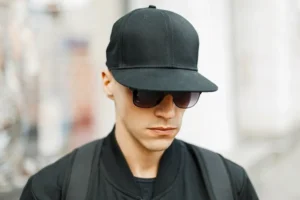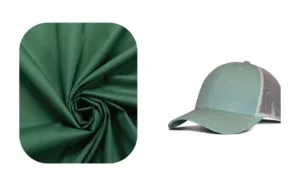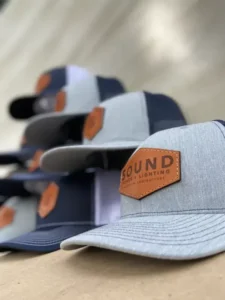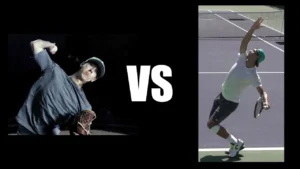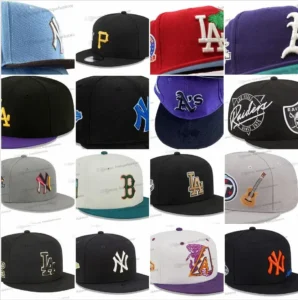When it comes to hat making, a question that pops up frequently is, “How much fabric does it actually take to make a hat?” Whether you’re a budding designer, a DIY enthusiast, or a business owner sourcing materials, understanding fabric requirements is essential. The amount varies widely depending on the hat style, size, and materials used, but typically ranges from 0.5 to 2 yards of fabric per hat.
This detailed guide breaks down the fabric consumption by hat types, material choices, and production methods, giving you practical insights to plan better and avoid waste. Imagine you’re sitting with your favorite cap in hand, curious about what went into its making — fabric included. Let’s dive into the numbers and stories behind the cloth that shapes our favorite headwear.
1.What factors influence the amount of fabric needed to make a hat?

Fabric needed depends on hat style, size, number of panels, lining, and any added design features like brims or ear flaps.
- Hat Style & Complexity: Simple designs like beanies require less fabric than wide-brim hats or bucket hats with linings and trims. For example, a basic beanie might use around 0.5 yards, while a fedora could need 1.5 yards or more.
- Size and Fit Variations: Larger hat sizes naturally consume more fabric. Children’s hats require less fabric, while adult plus sizes demand additional material. Adjustable hats may save fabric by using smaller panels but include straps or snaps.
- Number of Panels and Seams: Hats made with multiple fabric panels increase seam allowances and thus fabric usage. A six-panel baseball cap has more fabric needs than a simple two-panel design.
- Additional Components: Brims, ear flaps, inner linings, sweatbands, and decorative elements add to fabric consumption. For example, a bucket hat with a wide brim and lining can require double the fabric compared to an unlined cap.
- Fabric Width and Pattern Layout: Fabric widths (usually 45″ or 60″) and how pieces are laid out for cutting affect yardage. Inefficient layouts or patterned fabrics may increase waste.
Understanding these factors helps manufacturers optimize fabric use and cost. At Kinwin, we consult with customers on these specifics to tailor fabric orders precisely, ensuring quality while controlling expenses. Feel free to contact us to discuss your custom hat fabric needs.
| Factor | Description | Example / Impact |
|---|---|---|
| Hat Style & Complexity | Simple styles need less fabric; complex designs with brims or linings need more | Beanie ~0.5 yards; Fedora ~1.5+ yards |
| Size and Fit Variations | Larger sizes require more fabric; kids’ hats use less; adjustable hats may save some fabric | Adult plus sizes need more material |
| Number of Panels and Seams | More panels mean more seam allowance and fabric usage | 6-panel cap uses more fabric than 2-panel design |
| Additional Components | Brims, ear flaps, linings, sweatbands increase fabric consumption | Bucket hat with lining can double fabric needed |
| Fabric Width & Pattern Layout | Fabric width (45” or 60”) and layout efficiency affect yardage and waste | Patterned fabrics often increase fabric waste |
2.Which types of hats require more or less fabric?
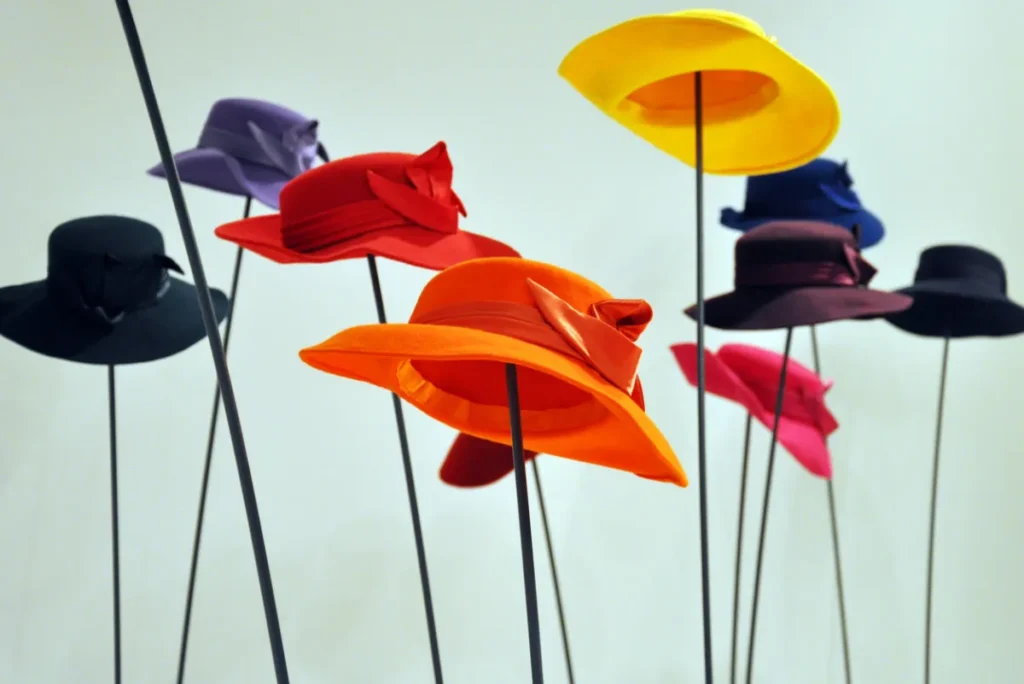
Wide-brim hats and lined hats typically need more fabric, while simple caps and beanies use less.
- Low Fabric Usage Hats:
- Beanies and skull caps are usually simple tubes of fabric, needing about 0.5 yards.
- Baseball caps, depending on panel count and brim size, average around 0.75 to 1 yard.
- Moderate Fabric Usage Hats:
- Bucket hats with moderate brims and optional linings range from 1 to 1.5 yards.
- Trucker hats with mesh backs may require less fabric on the back panel but use more for the front.
- High Fabric Usage Hats:
- Wide-brim sun hats, fedoras, and cowboy hats can require 1.5 to 2+ yards, especially with thick linings or decorative elements.
- Hats with ear flaps, double layers, or intricate patterns increase fabric needs further.
This classification helps you plan your fabric procurement based on the styles you want to produce. If you’re unsure which hat type fits your fabric budget, Kinwin’s experts can help analyze your style portfolio and recommend efficient solutions.
| Fabric Usage Level | Hat Types | Approximate Fabric Needed | Notes |
|---|---|---|---|
| Low Fabric Usage | Beanies, skull caps | ~0.5 yards | Simple tube shapes |
| Baseball caps | 0.75 – 1 yard | Varies by panel count and brim size | |
| Moderate Fabric Usage | Bucket hats | 1 – 1.5 yards | Moderate brims, optional linings |
| Trucker hats | Varies | Less fabric on mesh back, more on front | |
| High Fabric Usage | Wide-brim sun hats, fedoras, cowboy hats | 1.5 – 2+ yards | Thick linings, decorative elements increase usage |
| Hats with ear flaps, double layers | 2+ yards | Complex designs require more fabric |
3.How is fabric consumption calculated for different hat styles?

Fabric usage is calculated by adding pattern piece areas, seam allowances, lining, and waste factors.
- Pattern Piece Measurement: Each hat pattern piece (crown, side panels, brim) is measured for area. The sum total gives the base fabric needed.
- Seam Allowances: Extra fabric is accounted for seams and hems, typically 0.25” to 0.5” per seam. Hats with multiple panels accumulate more allowance.
- Lining and Interfacing: If hats have lining or interfacing, fabric yardage doubles or increases by 50%, depending on construction.
- Fabric Width Impact: Since fabrics come in fixed widths (commonly 45” or 60”), layout efficiency is key. Wider fabric can reduce yardage needed but may increase waste if pattern pieces don’t fit well.
- Waste and Cutting Loss: Manufacturers add about 5-10% extra fabric to cover cutting waste, defects, or mistakes.
A practical example: A 6-panel baseball cap with a 2.5” brim on 60” fabric might use about 1 yard including lining and seam allowance. Understanding these calculations helps avoid under- or over-ordering fabric, which affects cost and inventory. Kinwin provides tailored fabric consumption calculations to ensure you get exactly what your project needs.
| Calculation Factor | Description | Impact on Fabric Usage |
|---|---|---|
| Pattern Piece Measurement | Total area of all pattern pieces (crown, side panels, brim) | Base fabric needed determined by pattern size |
| Seam Allowances | Extra fabric (typically 0.25”–0.5” per seam) for sewing seams and hems | Adds incremental fabric depending on panel count |
| Lining and Interfacing | Additional fabric for lining or interfacing layers | Increases yardage by 50% to 100% depending on design |
| Fabric Width Impact | Fabric available width (usually 45” or 60”) and efficiency of pattern layout | Wider fabric may reduce yardage but can increase waste |
| Waste and Cutting Loss | Extra 5–10% fabric added for cutting inefficiencies, defects, and errors | Ensures sufficient fabric, prevents shortages |
4.Do material types affect fabric usage in hat production?
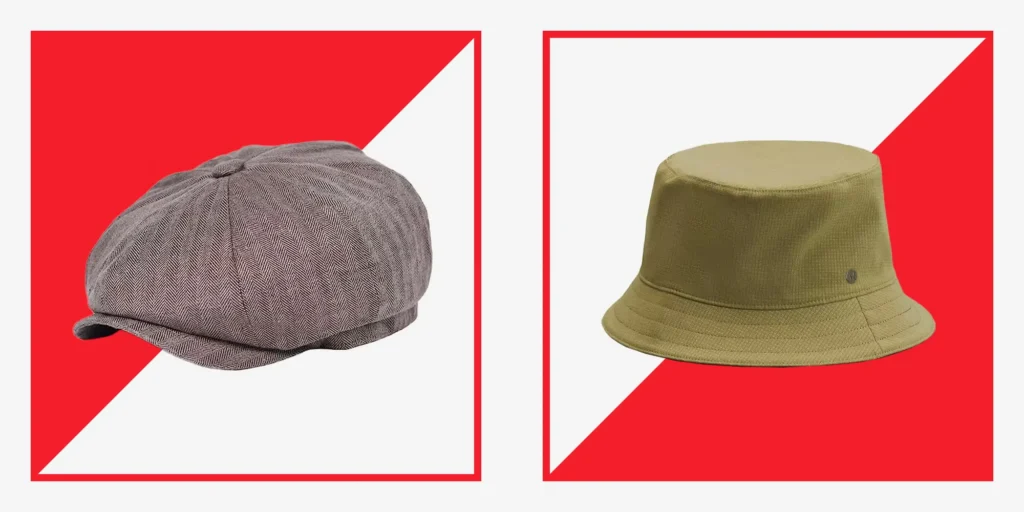
Yes. Fabric stretch, thickness, and pattern repeat affect how much fabric you need.
- Stretch vs. Non-Stretch Fabrics: Stretch fabrics like knits for beanies can be cut more efficiently due to flexibility, often reducing fabric waste. Non-stretch woven fabrics (cotton twill, canvas) require precise cuts and more allowance.
- Thickness and Weight: Heavy fabrics may need lining to improve comfort and shape, increasing fabric use. Thinner fabrics may be doubled for durability.
- Pattern Repeat and Directional Prints: Fabrics with large prints or directional patterns require careful layout to match designs, increasing waste and fabric needs. Solid colors are easier to optimize.
- Environmental Considerations: Sustainable or recycled fabrics sometimes come in limited widths or thicknesses, affecting fabric consumption. Choosing eco-friendly materials might require design adjustments to minimize waste.
Material choice directly influences both the amount and type of fabric required. Kinwin partners with fabric suppliers offering a wide range of eco-friendly and high-performance textiles and assists clients in choosing the best material for their style and sustainability goals.
| Material Factor | Description | Effect on Fabric Usage |
|---|---|---|
| Stretch vs. Non-Stretch | Stretch fabrics (knits) allow flexible cutting, reducing waste; non-stretch require precise cuts | Stretch fabrics often reduce waste; non-stretch need more allowance |
| Thickness and Weight | Heavy fabrics may require lining or doubling; thin fabrics may be layered for durability | Increases fabric consumption due to added layers |
| Pattern Repeat & Prints | Large/directional prints require matching, causing more waste; solids optimize layouts better | Increases fabric needed for pattern alignment |
| Environmental Considerations | Sustainable/recycled fabrics may have limited widths or thickness; may require design tweaks | Could increase fabric use or force layout changes |
5.Is there a standard fabric yardage for making common hat types?
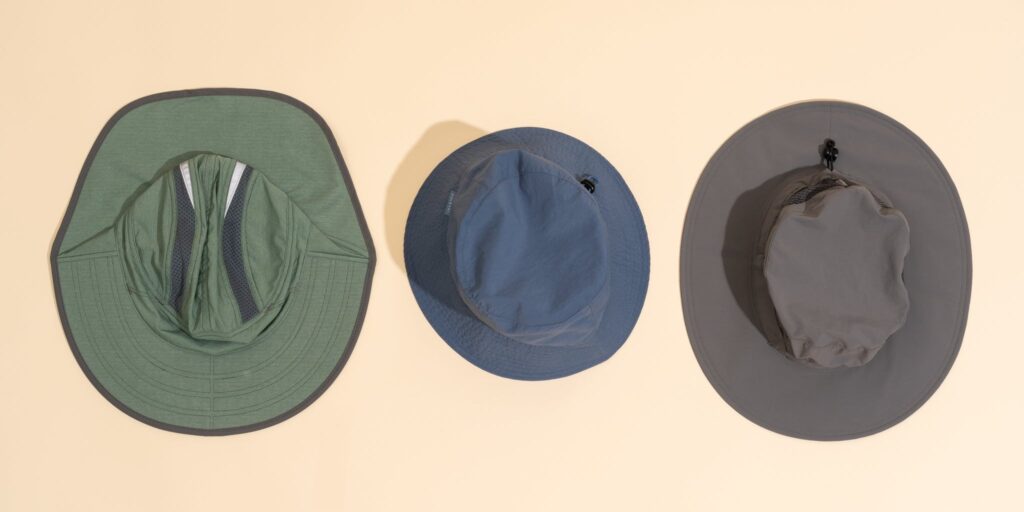
While it varies, common hats often fall within these fabric yardage ranges:
| Hat Type | Approximate Fabric Needed (yards) |
|---|---|
| Beanie | 0.4 – 0.6 |
| Baseball Cap | 0.75 – 1.0 |
| Bucket Hat | 1.0 – 1.5 |
| Wide-Brim Sun Hat | 1.5 – 2.0+ |
| Fedora / Cowboy Hat | 1.5 – 2.0+ |
- Variability by Size and Customization: Larger sizes or custom features like ear flaps or sweatbands may push these numbers higher.
- Factory Production vs. DIY: Industrial cutting layouts optimize yardage, often reducing fabric use compared to handmade or small batch hats.
- Importance of Accurate Estimation: Overstocking fabric ties up capital and storage, while understocking delays production. Knowing standard yardages aids efficient purchasing.
Kinwin offers precise yardage guidelines and custom estimates for bulk orders, helping brands control costs and streamline production.
| Hat Type | Approximate Fabric Needed (yards) |
|---|---|
| Beanie | 0.4 – 0.6 |
| Baseball Cap | 0.75 – 1.0 |
| Bucket Hat | 1.0 – 1.5 |
| Wide-Brim Sun Hat | 1.5 – 2.0+ |
| Fedora / Cowboy Hat | 1.5 – 2.0+ |
6.Are there ways to optimize fabric use and reduce waste in hat manufacturing?
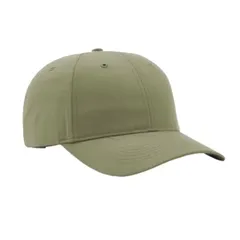
Yes, fabric optimization methods include smart pattern layouts, using offcuts creatively, and fabric selection.
- Efficient Pattern Nesting: Using software to nest pattern pieces tightly minimizes fabric waste and cuts cost.
- Multi-Size Grading Strategies: Grouping different hat sizes strategically during cutting can reduce leftover scraps.
- Recycling Offcuts: Leftover fabric pieces can be reused for smaller components like sweatbands, labels, or decorative patches.
- Fabric Selection for Waste Reduction: Choosing wider fabrics or those with less pattern repeat allows more efficient layouts.
- Design Adaptation: Simplifying hat design or reducing panel counts can save fabric without sacrificing style.
- Sustainable Practices: Some manufacturers use zero-waste pattern design techniques, improving eco-footprint and brand appeal. Optimization Method Description Benefits Efficient Pattern Nesting Software nests pattern pieces tightly to minimize fabric waste Reduces fabric consumption and lowers costs Multi-Size Grading Strategically grouping different hat sizes during cutting Minimizes leftover scraps Recycling Offcuts Using leftover fabric pieces for smaller parts like sweatbands or patches Maximizes material use, reduces waste Fabric Selection for Waste Reduction Choosing wider fabrics or those with minimal pattern repeats Enables more efficient fabric layouts Design Adaptation Simplifying designs or reducing panel counts Saves fabric while maintaining style Sustainable Practices Employing zero-waste pattern design techniques Enhances environmental sustainability and brand image
At Kinwin, we integrate these optimization strategies into our production lines. Contact us for a consultation to develop a fabric-efficient, cost-effective hat line customized to your brand’s vision.
Conclusion
Understanding how much fabric it takes to make a hat is crucial for designers, manufacturers, and brands alike. From the hat style and size to fabric type and production methods, many factors shape fabric consumption. With the right knowledge, you can optimize fabric use, cut costs, and produce high-quality, sustainable hats that your customers love.
If you want to explore custom hat production with precise fabric planning and expert support, Kinwin is here to help. Reach out today and let’s start crafting your next successful hat collection with the perfect fabric solutions.


